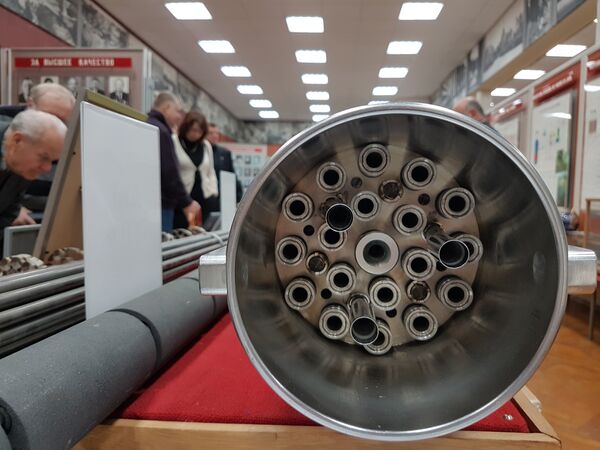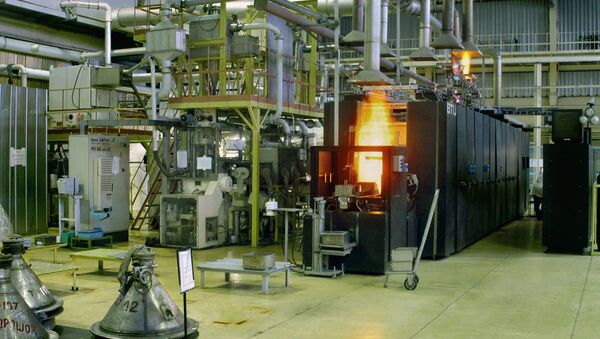The tour was conducted for the participants of 11th International Public Dialogue Forum "Nuclear Energy, Environment, Safety-2016" held under the auspices of Rosatom corporation in Moscow in November 22-23.
Based in the Russian city of Elektrostal, the Machine-Building Plant is one of the twelve companies of the TVEL corporation which currently controls about 17 percent of the world nuclear fuel market and seeks to increase it to 22 percent by 2032.

The facility manufactures fuel for most types of nuclear reactors, including fast neutron reactors, research reactors and ship reactors. It supplies nuclear fuel assemblies and tablets to 78 reactors in Russia, Europe and Asia.

The fuel for different types of reactors is being manufactured according to a uniform automated procedure, the only difference being the type of uranium powder used in the process.

First, enriched uranium powder is pressed and subjected to heat treatment. The size of the resultant tablets is then checked by a laser micrometer; defective tablets are then discarded to a special container while the good ones are moved to a separate assembly area where they’re used to create nuclear fuel assemblies.
Alexei Zhigalin, Machine-Building Plant’s CTO, told Sputnik that TVEL corporation stands on par with the world’s lead nuclear fuel manufacturers like AREVA or Westinghouse.
"There’s a Russian-design nuclear plants market which our competitors find hard to make inroads into. US company Westinghouse is trying to gain a foothold in this market but, unfortunately, they are not doing too well. That is, unfortunately for them and lucky for us. As for our contacts with AREVA, they decide which countries to export nuclear fuel to and we just produce it for them," Zhigalin explained.

The Machine-Building Plant was established nearly a hundred years ago, as on February 28, 1917 the factory produced its first load of munitions. Originally used to produce various types of military ordnance, including rockets for WWII multiple launch rocket systems, the facility eventually became part of the Soviet nuclear program. In 1954 the plant produced fuel for the Obninsk nuclear power plant – the first nuclear power plant in the world – and in 1957 it supplied fuel to the first nuclear-powered icebreaker in the world.

Today nuclear power plants remain one of the most stable sources of energy in the world which also generates very little CO2 emissions. According to World Nuclear Association, the world nuclear power generation is expected to increase from 379 gigawatts in 2015 to 552 gigawatts in 2035, which will in turn drastically increase the demand for nuclear fuel.

